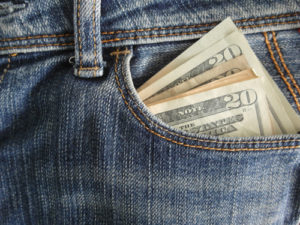There are lots of advantages to an HSA. But you should keep these three potential pitfalls in mind b...
Feb 12, 2021
Establishing a Financial Safety Net
How much is enough?
Most financial professionals suggest that you have three to six months’ worth of living expenses in your cash reserve. The actual amount, however, should be based on your particular circumstances. Do you have a mortgage? Do you have short-term and long-term disability protection? Are you paying for your child’s orthodontics? Are you making car payments? Other factors you need to consider include your job security, health, and income. The bottom line: Without an emergency fund, a period of crisis (e.g., unemployment, disability) could be financially devastating.
Building your cash reserve
If you haven’t established a cash reserve, or if the one you have is inadequate, you can take several steps to eliminate the shortfall:
- Save aggressively: If available, use payroll deduction at work; budget your savings as part of regular household expenses
- Reduce your discretionary spending (e.g., eating out, movies, lottery tickets)
- Use current or liquid assets (those that are cash or are convertible to cash within a year, such as a short-term certificate of deposit)
- Use earnings from other investments (e.g.,stocks, bonds, or mutual funds)
- Check out other resources (e.g., do you have a cash value insurance policy that you can borrow from?)
A final note: Your credit line can be a secondary source of funds in a time of crisis. Borrowed money, however, has to be paid back (often at high interest rates). As a result, you shouldn’t consider lenders as a primary source for your cash reserve.
Where to keep your cash reserve
You’ll want to make sure that your cash reserve is readily available when you need it. However, an FDIC-insured, low-interest savings account isn’t your only option. There are several excellent alternatives, each with unique advantages. For example, High-Yield Savings Accounts, money market accounts, and short-term CDs typically offer higher interest rates than savings accounts, with little (if any) increased risk.
Note: Don’t confuse a money market mutual fund with a money market deposit account. An investment in a money market mutual fund is not insured or guaranteed by the FDIC. Although the mutual fund seeks to preserve the value of your investment at $1 per share, it is possible to lose money by investing in the fund. When considering a money market mutual fund, be sure to obtain and read the fund’s prospectus, which is available from the fund or your financial advisor, and outlines the fund’s investment objectives, risks, fees, expenses. Carefully consider those factors before investing.
It’s important to note that certain fixed-term investment vehicles (i.e., those that pledge to return your principal plus interest on a given date), such as CDs, impose a significant penalty for early withdrawals. So, if you’re going to use fixed-term investments as part of your cash reserve, you’ll want to be sure to ladder (stagger) their maturity dates over a short period of time (e.g., two to five months). This will ensure the availability of funds, without penalty, to meet sudden financial needs.
Review your cash reserve periodically
Your personal and financial circumstances change often–a new child comes along, an aging parent becomes more dependent, or a larger home brings increased expenses. Because your cash reserve is the first line of protection against financial devastation, you should review it annually to make sure that it fits your current needs.
Broadridge Investor Communication Solutions, Inc
You may also like
Sep 10, 2019
Do you want to earn some extra money doing what you enjoy on your own time? Consider pursuing a side...
Sep 3, 2020
When you envision retirement, you probably see yourself living comfortably, doing what makes you hap...









